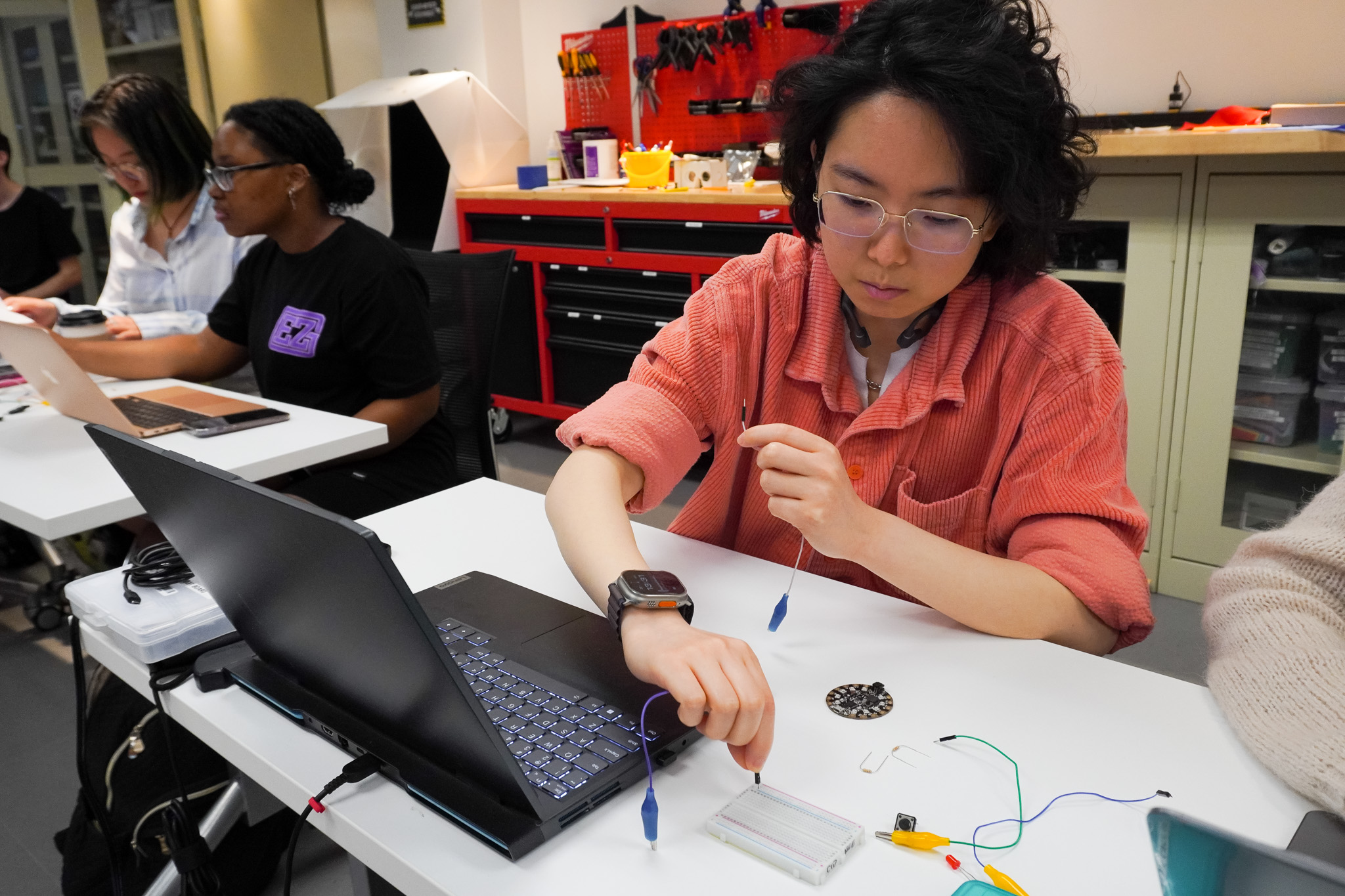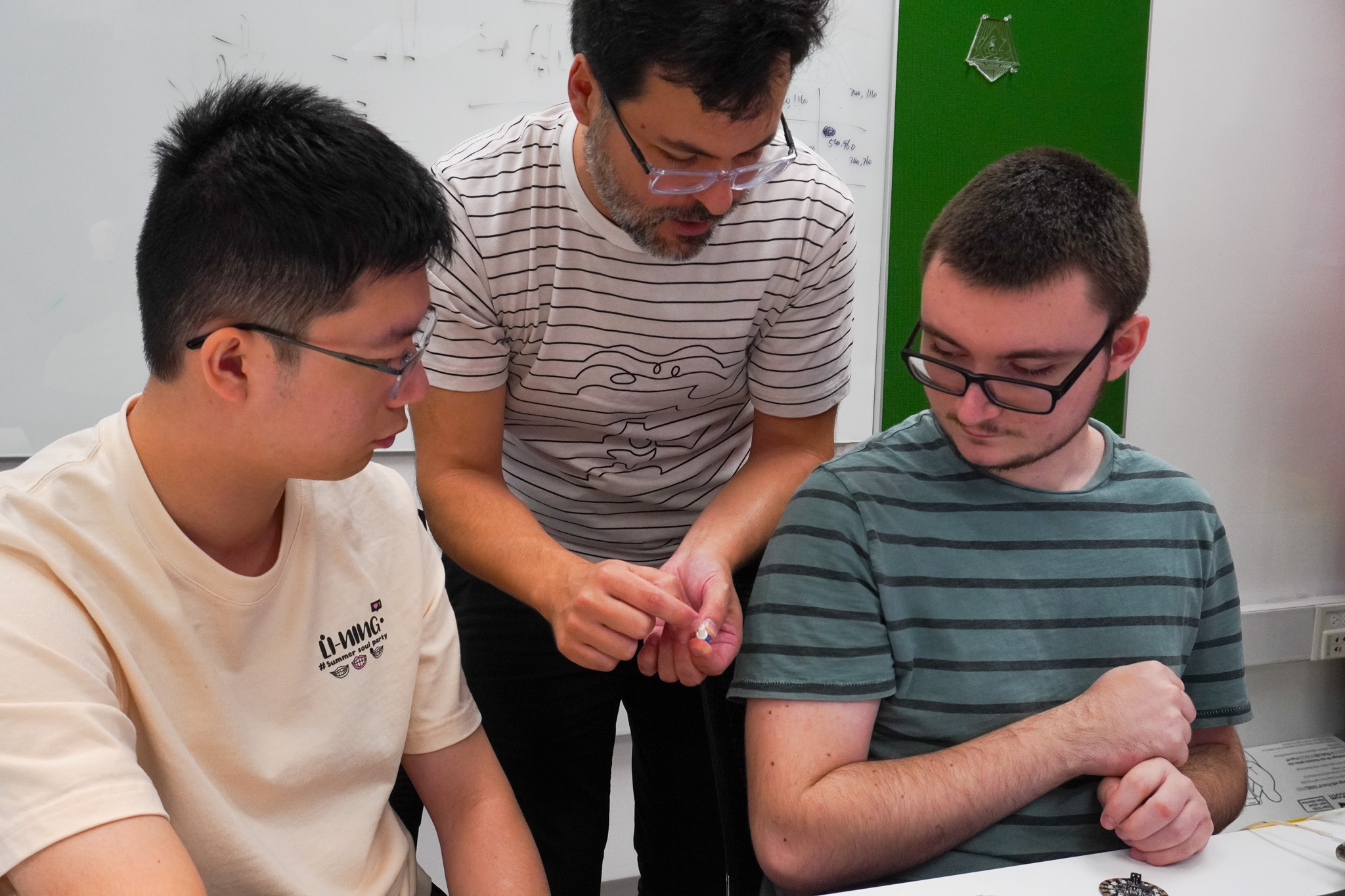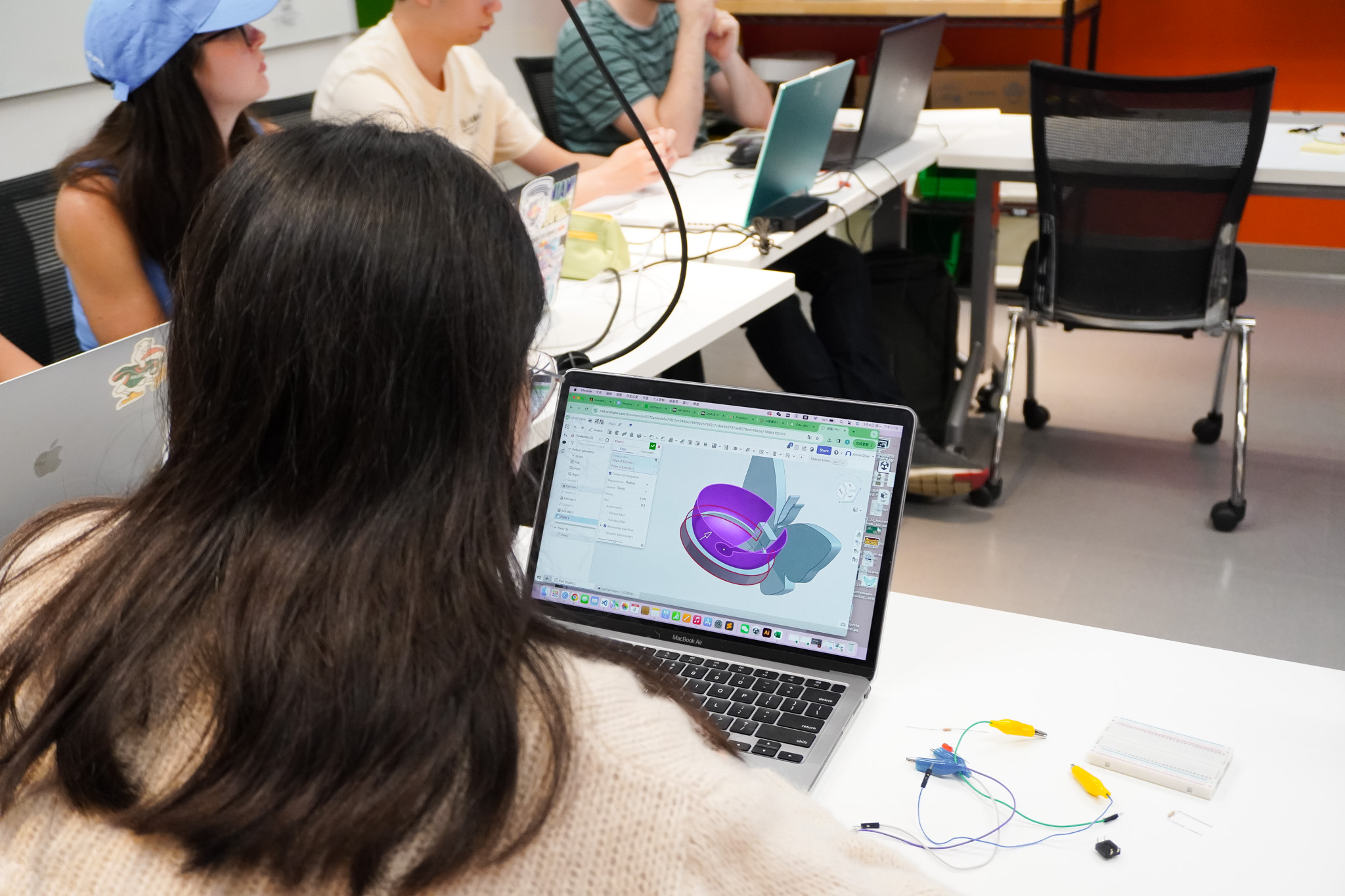Architecture
Architecture Design VII (Studio) - Designing Spaces in the Metaverse | 3-6 Credit Hours
Students use the Meta Quest 2 to critique work they created in the studio in VR as a group. Software used: Arkio, Engage, and standard architectural design software.
Architecture/Interactive Media/Religious Studies
School of Architecture: Intro to VR/AR | 3 Credit Hours
Students use Meta Quest 2 headsets to create renderings of what the future of downtown Miami would look like. Software used: Arkio, Engage, and standard architectural design software.
Religion and Sacred Spaces in the Era of VR and Artificial Intelligence | 3 Credit Hours
Students explore how religions and spatial spaces are constructed to create a sense of awe and build communities. Students then apply these same principles to build their own metaverse experiences for their final projects. Software used: Engage, Unity, Blender, standard architectural design software.
Art History
Survey of Western Art I | 3 Credit Hours
The University of Miami VRLI team built a custom VR museum for this class; arguably, this museum could be described as the world's first 3D syllabus. Students in this course visited the museum at the start of every other class, then "stepped through" the artwork to explore locations and life-size monuments, from the pyramids in Egypt to Stonehenge and famous castles and cathedrals.
Interactive Media
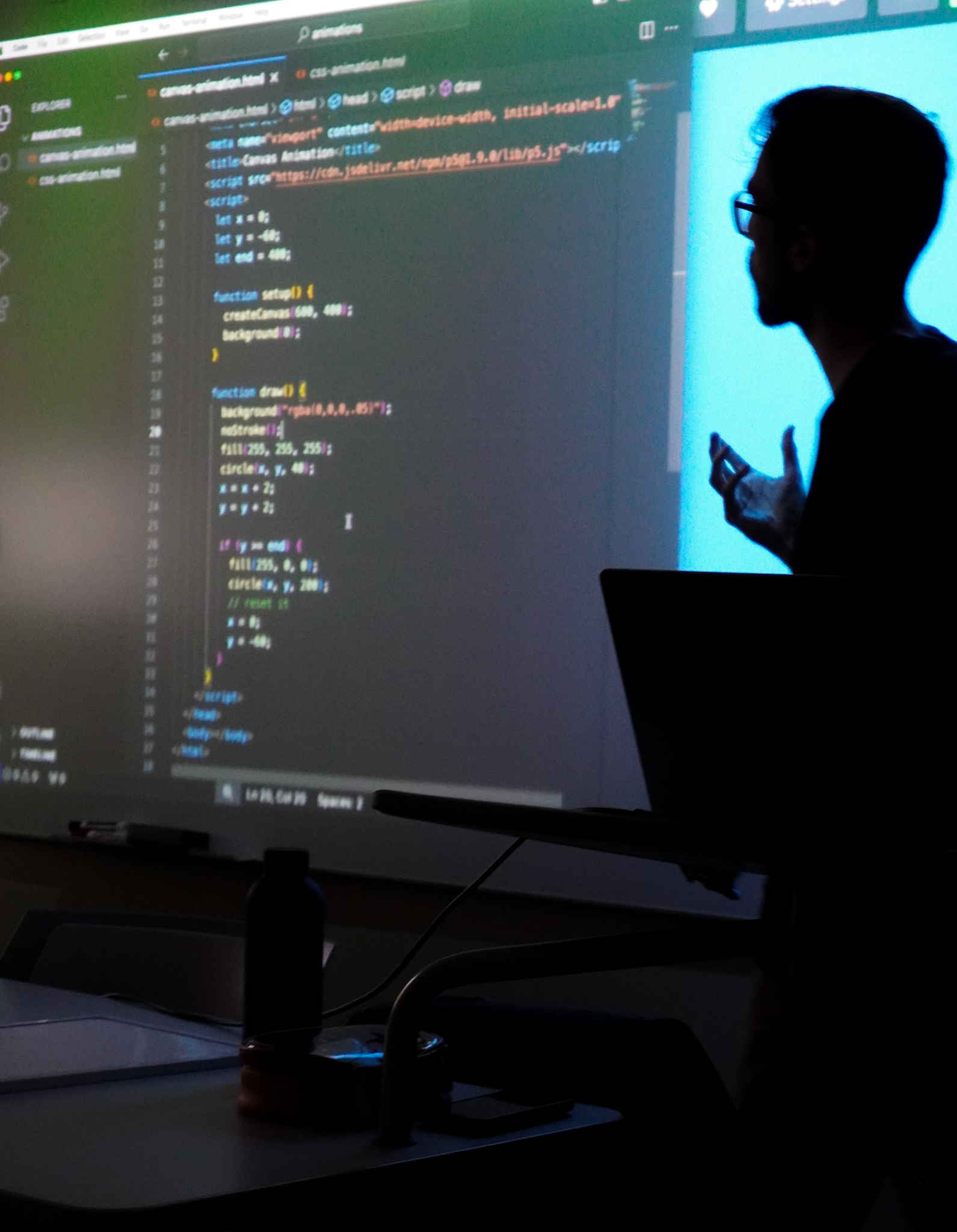
Intro to Spatial Computing | 3 Credit Hours
This class examines VR from the viewpoint of various disciplines, including popular culture, engineering, behavioral science, and communication. Each student is responsible for creating a Virtual World to showcase an idea/concept of their own creation. Software used: Engage, Meta Horizon Worlds, RecRoom
Building Virtual Worlds | 3 Credit Hours
Students learn how to build 3D environments. Software used: Unity and Blender
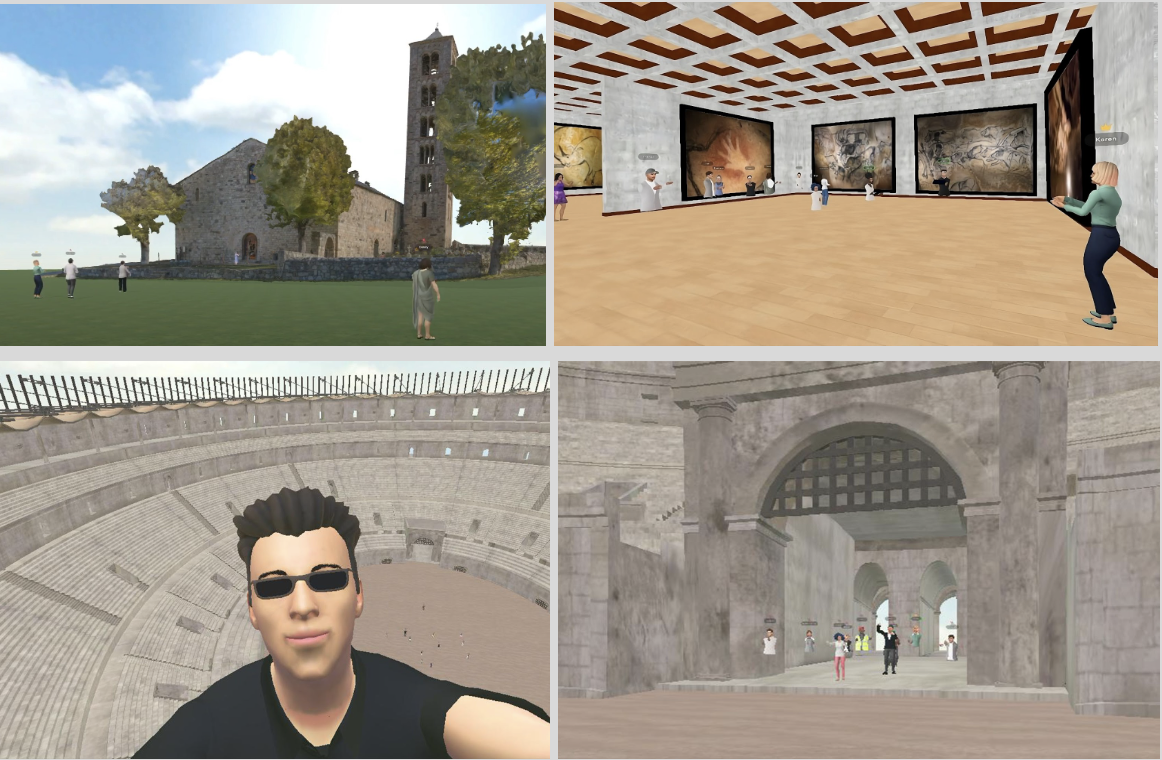
Immersive Storytelling | 3 Credit Hours
Students explore the different techniques to create experiential stories for immersive media.
Software Used: Premiere-pro, Unity, Blender, MUD Foundation, and a watchlist comprised of several stories from the Meta Quest store, such as On the Morning You Wake (to the End of the World), Notes on Blindness, Richies Plank, Travelling while Black and others.
General Engineering
Digital Solutions for the Future | 3 Credit Hours
Students learn how to assemble a computer from parts in an interactive multiuser VR simulation. Software used: Engage and tailored software and content created by our team.
Innovation, Technology, and Design (ITD)
Creativity, the Creative Process, and Innovation | 3 Credit Hours
Students explore how creativity is the cornerstone of innovation and utilize XR technologies to begin work on an MVP or business model for an idea/concept of their own choosing. They are exposed to multiple technologies to provide a basis for creating their final product. Software used: Engage, MUD Foundation, SolidWorks, Unity
Kinesiology
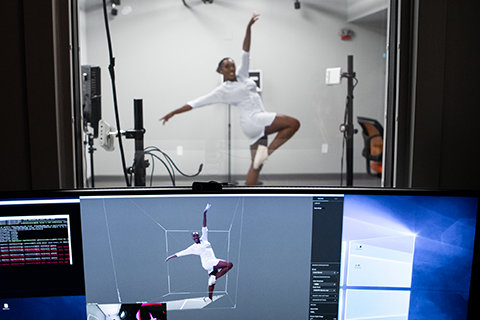
Basic Anatomy Lab | 2 Credit Hours
This course presents a general overview of the anatomy of the major body systems, such as the skeletal, muscular, cardiovascular, nervous, digestive, respiratory and reproductive systems using VR as a tool to manipulate and understand each aspect. Software used: VirtualMedicine
Marketing
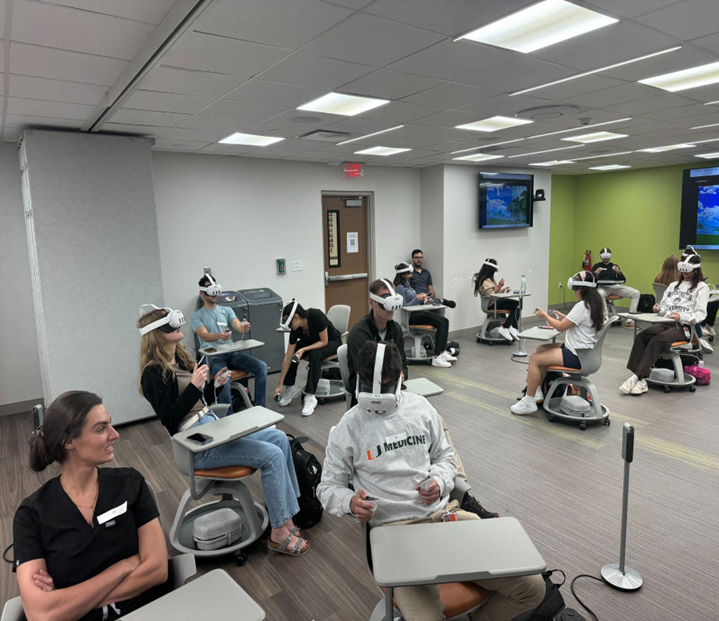
Application of Artificial Intelligence in Marketing | 3 Credit Hours
This course explores the intersection of marketing, Virtual Reality (VR), and Artificial Intelligence (AI), emphasizing how these technologies are reshaping the field. Students will learn to harness AI-driven tools and VR experiences to understand customer psychology, develop data-driven strategies, and create immersive marketing campaigns. By examining how AI insights and VR engagement can reveal new consumer needs and behaviors, this class prepares students to thrive in a dynamic, technology-forward marketplace where marketing not only meets but anticipates customer demands.
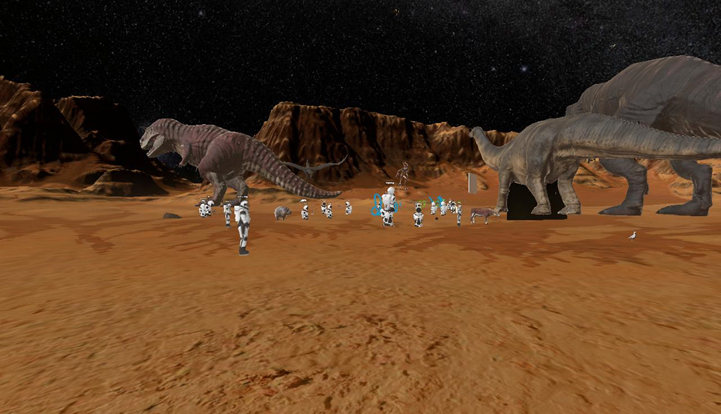
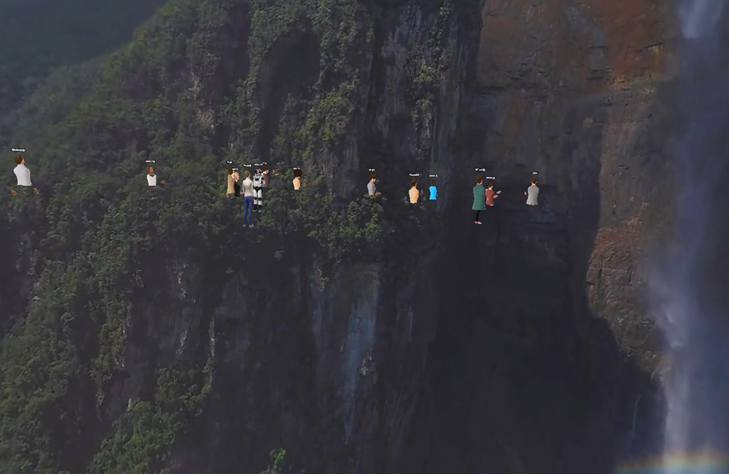
MD Program
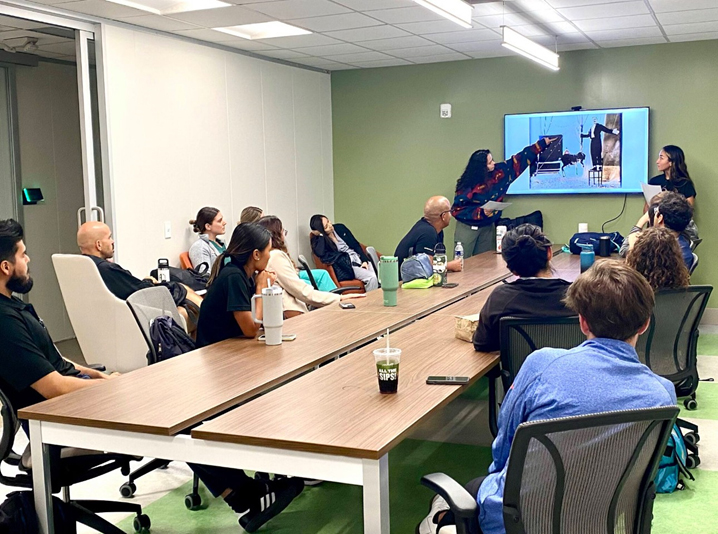

Medicine as a Profession 102
This interprofessional Artificial Intelligence/Virtual Reality/Humanities workshop involves over 400 medical, nursing, and physical therapy students. They spend time learning with each about disruptive technologies and their implications to our lives. You will learn how to:
- Define terms such as artificial intelligence (AI), Virtual Reality (VR), machine learning, and neural networks.
- Describe the applications of AI and VR to clinical health care including prevention, diagnosis, treatment,monitoring, and research.
- Describe the critical evaluation of AI tools in terms of their accuracy, efficiency, and ethical ramifications.
- Reflect on the ethical and legal implications of using AI tools, including privacy, data security, and informed consent.
- Reflect on the future integration of AI tools in clinical workflow and the need to develop adaptive expertise.
- Reflect on the impact of AI tools on patient care and humanistic skills.
- Utilize Virtual Reality and AI tools that may impact future clinical training and practice.
- Utilize Visual Thinking Strategies as method to reflect on the impact of technology on humanistic skills and patient care.
Music Engineering
Music in the Metaverse | 3 Credit Hours
A survey of conceptual and philosophical topics relating to music (and other activities/experiences) in the Metaverse, followed by technical exploration of topics relating to sound in XR, such as source localization and HRTFs. Students will gain experience of different hardware (e.g., Meta Quest, HTC Vive) and platforms (e.g., Unity, A-Fram), and they will design, develop, and evaluate a music-Metaverse experience.
Opera Production | 1 Credit Hour
The World Premiere of the chamber opera titled “Stained Glass” (by Shawn Crouch and Dana Kaufman and directed by Jeffrey Buchman) was presented on campus at the Hormel Innovation Stage at the Frost School of Music that was created for live audience viewing with and without AR goggles.
This first image here shows the actress (the character is Mamah Borthwick, mistress of Frank Lloyd Wright) in the scene where their home, Taliesin, is burning down, having been set on fire by an arsonist. This is how the seen looked without the AR goggles, using projections alone.
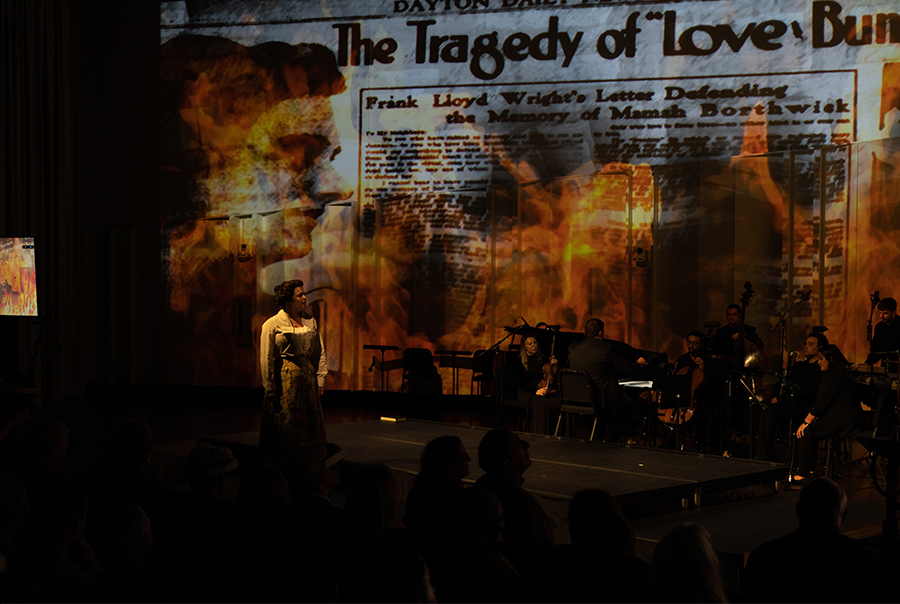
This next image is the same scene as seen through the VR goggles. Here, we were able to completely engulf her in flames. You are seeing projections of flames in the background in projections, with assests of flames in the foreground in AR.

Music Vocal Performance
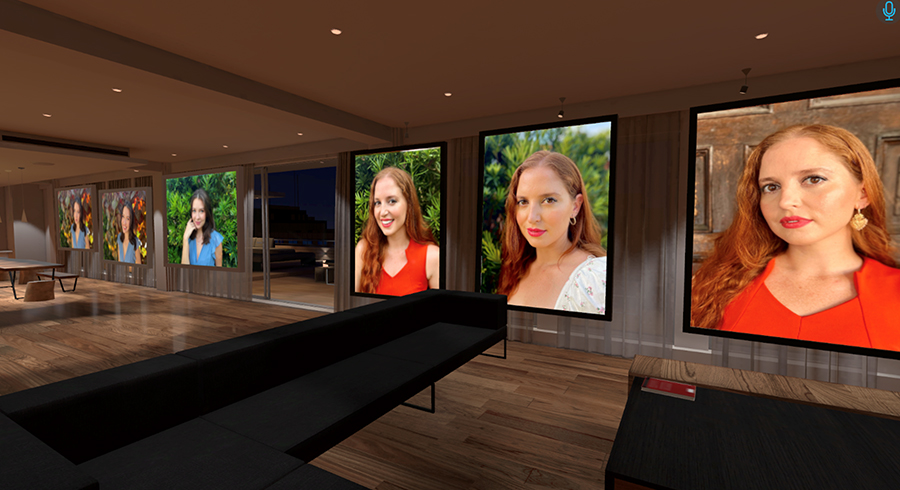
Masters Project | 1 Credit Hour
This course helps second year masters students to package up their promotional materials that they will be sharing as they begin to apply for work in the industry. These include their headshots and videos, and the course is designed to help them to think about their branding as they put their package together. Much of the course is about analyzing the materials of professionals in the industry along with those of the students in the course. It is incredibly useful to do a portion of the course in VR so that we can have images of artists around a space to easily compare and contrast and discuss in a very experiential and engaging way.
(Above is a scene in a NY loft with headshots of students in the class for analysis and discussion. It is very useful to be able to reference photos side by side and have all of them displayed in a single virtual space as comparison is being done of clothing choices, background choices, hairstyles, facial expressions, etc. VR has proven to be a great platform to do these exercises. Below is a screen capture of a student doing a presentation on branding of a well-known opera star. She is standing in front of a large video screen while a video of the artists is playing. The ability to see videos in such a large scale has a wonderful impact. She was also able to have photos of this artist to the sides of where the class was standing so that she could easily direct them to turn and see anything whe wished to reference during her presentation.)
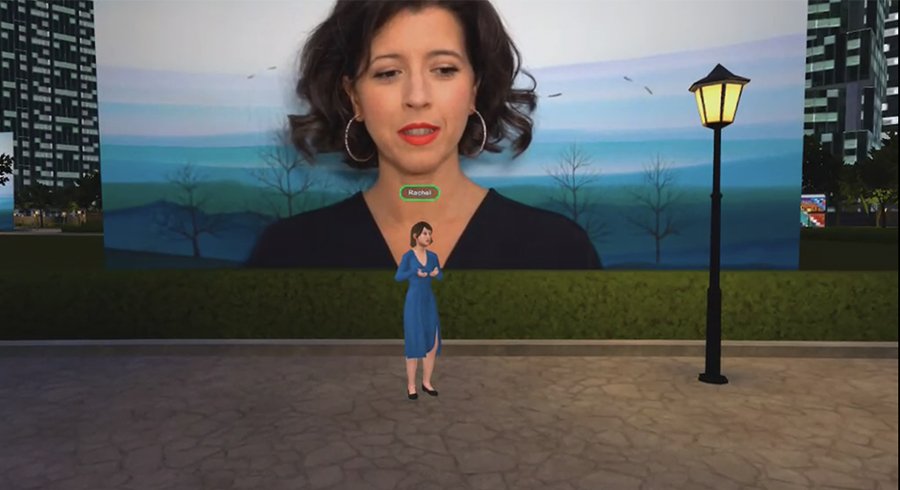
Nursing and Health Studies
Technology in Healthcare
This course involves an exploration of various aspects of the evolving technology to improve and transform health care and advanced practice nursing for Doctor of Nursing Practice students. An interprofessional learning event involving ~150 students (full engagement | medical, nursing, physical therapy) using multiple headsets to show different applications of VR.
Scholarly Project I + II
This course involves the implementation, evaluation, and dissemination of the scholarly project. For example, one student used two VR headsets to decrease anxiety of patients and parents during allergy testing as her Scholarly Project (multiple uses/full engagement). Part II involves starting a VR project to improve the peri-operative experience.
Practice Immersion I: Quality Improvement and Patient Safety
An interprofessional learning event amongst medical, nursing, and physical therapy students is offered in conjunction with this course.
Health Systems Development and Leadership: Practice Immersion Experience I and II
This course contains individually precepted learning experiences across the spectrum of nursing in a variety of settings. For example, two students learned how to use VR with Quest headsets and Engage platform to prepare for a future project involving VR to distract patients (multiple uses/full engagement).
Ophthalmology
2nd-year medical student ophthalmology rotation
First-year medical students from the Bascom Palmer Eye Institute do a rotation in VR. They explore how to collaborate in virtual space, attend a presentation, and learn about the Slit Lamp, a key tool used to examine ophthalmology patients.
Software used: Engage and tailored software and content created by our team.
Psychology
Concepts and Principles of Applied Behavior Analysis | 3 Credit Hours
The University of Miami VRLI team built a virtual reality version of the “Shaping Game” for the Applied Behavior Analysis Master’s program. Shaping is the process of systematically reinforcing successive approximations to a desired behavior. In this experience, graduate students can practice shaping behavior in a virtual space, allowing the class to meet in a remote format and come together to practice and refine an important clinical skill.



